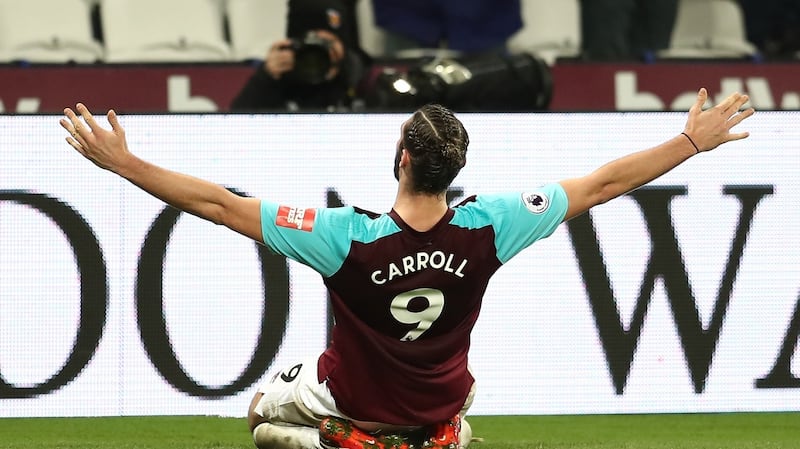It is nearly 40 years since a famous photo emerged that left the nascent Indian space programme an object of widespread mockery. The photo, published in 1979, showed India’s brand new state-of-the-art communications satellite being wheeled out for its launch – on a bullock cart.
For political opponents the picture exposed the space programme as a matter of grandiose ambition undercut by agricultural thinking, a bullock cart culture. That same year the Indian government announced it would also be spending $6bn on bullock cart research, with the idea of entering the white heat of a new industrial age via more efficient bullock carts.
Hands were wrung. The vision of a gleaming bullock cart future was portrayed as an emblem of all that was old and embarrassingly domestic. Spurned, the bullock cart lingered in the background looking sad and apologetic and wondering if it should, you know, just go or something.
All of which is a roundabout way of getting on to the greatest half-story of the year, the news of Andy Carroll's almost-move to Chelsea, quickly followed by news of Peter Crouch and his own probably-not move to Chelsea.
The Carroll transfer had been swirling in the background for some time. This week it abruptly gathered pace, before dying suddenly with the news of his ankle injury. Instead it is now Crouch who has been winched, hopefully, on to the launch pad, an even more startling prospect.
Carroll represents something else tactically and culturally, a football of the skies based on trajectory and spring
We get the idea though. Chelsea want a big man. They want an old big man. They want an old English big man. They wanted either one of these two old English big men who, beyond these qualities, actually have very little in common.
Crouch is a tall man who plays like a small man stretched on the rack, the tallest average-sized footballer in the world, winning his headers almost apologetically, often by ducking his head rather than rampaging through the skies. Carroll at his best is English football’s own one-man medieval siege tower, wheeled into place, drenched in oil and blood and sent off clanking towards the battlements in a whirl of flaming arrows.
Social media has naturally frothed at these developments. Heads have been scratched, questions asked. Chelsea are still in the space race, still fighting on all fronts. And yet beneath it all that creaking, clanking sound continues to clop and clatter. Mind your backs, Chelsea fans. The bullock carts are at the gate.
Beanpole goal-ace
And why not? There is something beautiful about the idea of Eden Hazard spending the last two years pondering the exact date of his departure for Real Madrid, and now finding himself gliding around gamely in the shadow of English football's favourite 36-year-old beanpole goal-ace.
Crouch is a fine, team-minded player and an excellent finisher. He would arguably score at least as many goals as Alvaro Morata over a single season. But he is also the only footballer I've seen who seems to actually slow down as he breaks into a sprint, fists beating the air, knees pumping uselessly, blown backwards like a crash-landing kite.
Carroll to Chelsea always seemed the more probable, and indeed probably the more interesting. Not least because Carroll represents something else tactically and culturally, an entirely different notion of what the game can be, a football of the skies based on things like trajectory and spring.

Plus all the while there is still swirling around him a slightly confused, celebratory notion of unashamed sporting aggression, of reclaiming the skies, the old freedoms, a woad-smeared idea of bare forked footballing manhood.
I once saw Carroll sprint 30 metres along the halfway line at the Boleyn Ground, launch himself at a goal-kick, soar in above the defensive line like an avenging griffin, and butt the ball out of play on the full with a thunk off the advert boards. Three sides of the ground rose in spontaneous applause. Nothing was achieved, nothing gained. But it felt brilliant.
The real shame with Carroll is his declining mobility. There is something a bit frightening now about the way he leaps for the ball, windmilling his arms in search of that old spring, like one of those overagitated rodeo horses that instantly keel over and start whinnying around in a semicircle, trampling cowboys into the dust, eyes narrowed with panic.
At the end of which it looks like Carroll to Chelsea won’t happen. Crouch to Chelsea probably won’t happen, just because it would be too good to hope for. This is a great shame, if only for the spectacle, and for the chance to confirm a few suspicions about the basic numbers of effectiveness and opportunity in elite teams.
Mainly though this whole saga is a wonderful tribute to Diego Costa, whose qualities as a team player and all-round leader from the front become more apparent every week he's no longer there.
Costa was spiky and good at holding the ball up. But the best thing about him was his mobility, his running power and willingness to carry the ball, those veering sprints in off the left touchline.
There is a kind of theatre to Chelsea’s inability to replace these qualities, the casting around for muscle and heft; in the process offering a suggestion of the value that might still remain in those old, bullock cart skills, the last embodiment of a kind of forward play that has all but vanished now, but which may yet come again.
– Guardian















